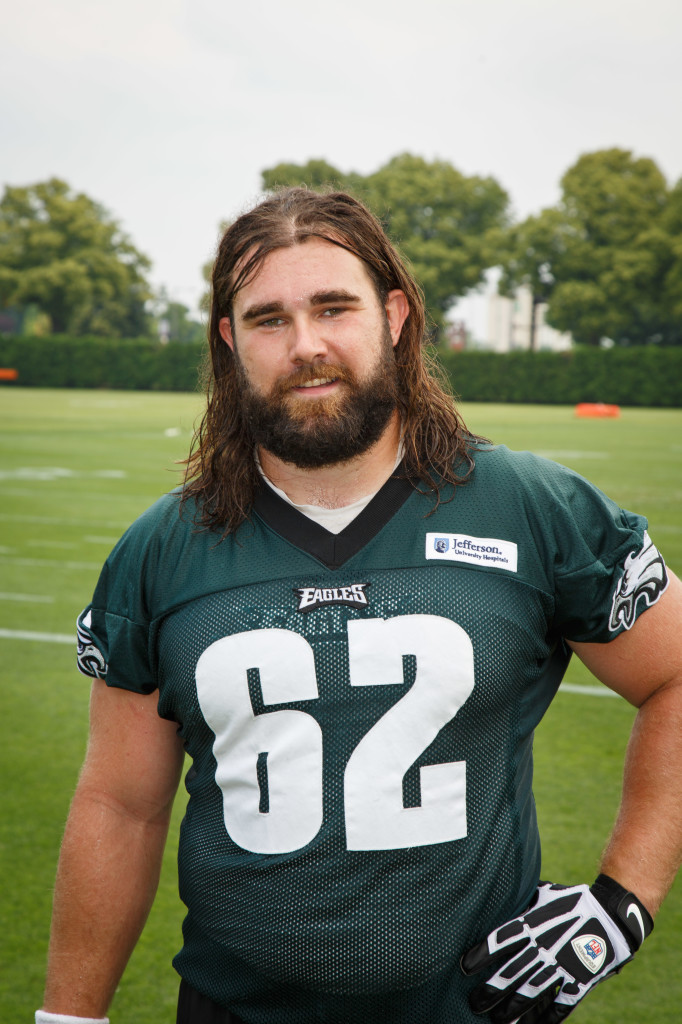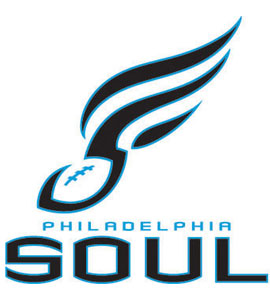QUALITY OF SLEEP IS JUST AS IMPORTANT AS HOW MUCH
Al Thompson
 Center Jason Kelce says teammates are taking advantage of Chip Kelly’s sports science ideas. Photo by Todd Bauders/contrastphotography.com
Center Jason Kelce says teammates are taking advantage of Chip Kelly’s sports science ideas. Photo by Todd Bauders/contrastphotography.comIt is only natural that young professional football players would challenge and evaluate any new direction rookie head coach wants his players to follow– especially a coach with no previous pro experience.
So when Eagles then new head coach Chip Kelly introduced his sports science department that had many training policies designed to get the most out of every player based on research that was unconditionally unbiased by team status, body size or talent level, it sparked interest at every corner of the sport.
What had many fans and observers intrigued was Kelly’s attention to proper sleep. On the surface it came off like some high school coach telling his kids to get to bed early.
Lost in the lack of detail was that Kelly’s sports science staff was just as concerned about their players quality of sleep, especially when you are dealing with dozens of players with giant necks and body weight over 250 pounds.
Sleep apnea is a condition that not only affect a player’s endurance during practice and games, it could have a significant impact on the player’s health.
“The organization’s strength and conditioning department puts a huge emphasis on rest,” Eagles center Jason Kelce told Footballstories. “A lot of things bigger guys have problems with is sleeping right because their lungs get closed etc. They are big on making sure you’re getting the right amount of sleep…eating right…hydration and all that stuff.”
Kelce said the Eagles focus on sleep was mainly based on improving performance.
“We put a huge emphasis with the Eagles on recovery,” Kelce said. “It’s one of the things that kept us injury free last year for the most part. A lot of that came down to luck too. It’s just kind of the way it goes.”
Former Eagles Hall of Fame defensive end Reggie White had suffered a fatal cardiac arrhythmia at the age of 43. The most likely cause of this, according to the Mecklenburg County Medical Examiner’s Office, was the cardiac and pulmonary sarcoidosis with which he had lived for years. It was also stated that sleep apnea, which White was known to suffer from, may have contributed to his death.
Eric Shantzer Doctor of Dental Surgery based in Richboro, PA gives an explanation on how sleep apnea works as a condition that can do much harm to the body while a person sleeps.
“Obstructive sleep apnea includes both apneic and hypopneic events,” said Shantzer, who has been treating patients for 30 years. “An apneic event occurs when there is a total obstruction of the airway causing breathing to stop for 10 seconds or longer. A hypopneic event occurs when the airway is only partially obstructed, but the body does not receive a sufficient amount of oxygen. Both events can occur when the back of the throat is obstructed by either the patient’s anatomy (e.g. enlarged tonsils) or anatomy that has been developed (e.g. the thickening of the neck musculature from exercise). Men with a neck size over 17 1⁄2 inches are at a significantly higher risk for having OSA. Most football players fall into this category due to their size.
“Obstructive sleep apnea affects the body in several ways,” Shantzer continued. “During sleep, if a patient has an apneic or hypopneic event, the body starves for oxygen. The body’s response is to release adrenaline in an attempt to wake the patient so he starts breathing again. The increase in adrenaline prevents the patient from remaining in deep stages of sleep and stresses the body by increasing blood pressure and pulse rate. Because someone who suffers from OSA is deprived of a normal sleep cycle, the mind and body cannot be totally rested. Without this essential rest, some patients with sleep apnea complain that they feel “foggy” and their decision-making abilities and reflexes are impaired. Additionally, if the deprivation of oxygen is severe enough, patients will wake up with headaches. To provide the reader a frame of reference, normally the oxygenation of blood in our bodies is roughly 98 percent. I have seen studies that show those suffering with severe sleep apnea having oxygenation levels dip into the mid 60 percent range.”
You can see why the sports science department of a NFL team with hundreds of millions of dollars invested in its players would pay a lot of attention to this part of its training regimen.
Kelce said he is paying attention to the quality of his sleep. He said he knows that if the team wants him playing at about 300 pounds, the 6-foot-3 lineman, the idea of sleep apnea affecting him is real.
“I’ve been kind of on the fence right now, I’ve been sleeping good right now,” Kelce said. “But some times when I put my weight up which I am going to for the season, or what I have been doing…I start developing weight induced sleep apnea…where your neck is too big…I might get tested later down the line towards the season. But right now I am not having a problem.”
Shanzer talked about several ways sleep apnea can be treated.
“There are only a few treatment options for OSA,” Shantzer said. “If the blockage can be correctly identified, the patient might be able to undergo nasal or throat surgery to open the airway. This only works in a minority of cases and there is a significant amount of rebound if the tissue grows back. When surgery is not a viable option, there are different devices that help open up the patient’s airway.
The CPAP (constant positive air pressure) machine is the medical “gold standard” of treatment for sleep apnea. The apparatus has a mask that is strapped over the mouth and/or nose. It works by
forcing air down the patient’s throat and blowing the obstruction open, thereby oxygenating the blood. If a patient can tolerate the use of CPAP, it is a good option.”
Shantzer said many mostly male patients have trouble with the CPAP.
“In my practice, I see those who cannot tolerate CPAP,” he said. “Patients have compared it to trying to sleep with your head sticking out of a car window going 60 mph. They complain of several different issues including: the mask leaking or being too tight, the noise of the unit, drying of the mouth, and claustrophobia due to the restrictive nature of the equipment. Patients also complain that their bed partners find CPAP intrusive to their sleep as well. Many young men do not use CPAP because they find it embarrassing to use with others in bed. Another minor drawback of CPAP is most masks do not seal if the patient has facial hair.”
It is not going out on a limb to think the facial hair thing would definitely be a problem for the mega-bearded Kelce…his beard is so larger than life that it has its own twitter account (@JkelceBeard) with 2,640 followers.
Kelce talks about how the sports science information is being followed more and more by the Eagles players.
“There are some changes that we made, but it’s been easier to adapt to those changes because now you are only adapting to two or three different new things whereas last year it was a complete, wholesale new deal,” said Kelce who is entering his fourth NFL season. “This year we know what to expect, what’s going on, all the guys are returning we’ve been able to pick up and really start way ahead of where we were last year.
“More guys are utilizing it this year,” Kelce said referring to the research the conditioning staff made available. “Especially at this point…I think by the end of the season pretty much the entire team is utilizing it pretty well. But now at this point of the off season, a lot of guys are utilizing it. Really just for maintenance throughout OTA’s and offseason.”
Shantzer said there are alternatives to the CPAP and that it is part of his practice.
“An alternative to CPAP is the use of Oral Appliance Therapy (OAT),” Shantzer said. “Oral appliances are an effective, medically-approved treatment for mild and moderate cases, in addition to severe cases of OSA where the patient is CPAP intolerant. An oral appliance works by moving the lower jaw forward. By putting the jaw in this position, the base of the tongue is moved off the back of the throat, opening up the airway and allowing the patient to breathe. Perhaps surprisingly to some, this is usually a very comfortable jaw position.
“It is the same position most patients who suffer from TMD (temporomandibular dysfunction) are put in during treatment,” he continued. “The downward and forward position of the lower jaw helps decompress the disc of the joint and relieve stress on it. Interestingly, many new mouth guards being worn by athletes to enhance performance attempt to place the jaw in a similar position.
Oral appliance therapy does not work for everyone. Many times the results are not as dramatic as those obtained with CPAP; however, oral appliances are quiet, comfortable, and in my opinion the best alternative for patients who are CPAP intolerant. Some of the benefits of using an oral appliance are less obvious.
“Oral appliances passive devices and require no power. That means for patients who like to go camping, fishing or quietly sleep on planes, they can simply put their appliance in their mouth and minimize, if not eliminate totally, apneic and hypopneic events. Also, snoring is reduced in approximately 85 percent of cases, which can be a big benefit if your bed partner complains of the noise you are making.”
Kelce said the Eagles are proactive about players finding out if sleep apnea is affection them.
“They encourage [sleep apnea testing],” Kelce said. “I know there are doctors refer you to. I haven’t done it yet so.”
If you have any questions about whether oral appliance therapy might be a valid option for you Dr. Shantzer would be happy to answer them. You can contact him at 215-396-9200 or sending an email at ERSDDS@dynamitesmiles.com.












